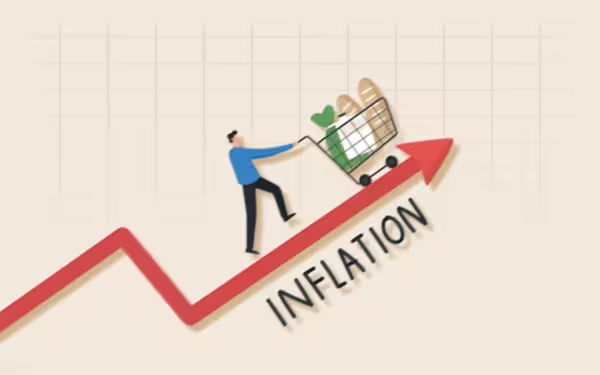Saturday, October 5, 2024 10:31 PM
Inflation Myths Debunked: Understanding PBS Data Credibility
- PBS inflation rate for September 2024 is 6.9 percent.
- Critics question PBS methodology and data integrity.
- CPI methodology reflects comprehensive electricity consumption.
 Image Credits: brecorder
Image Credits: brecorderExplore the myths surrounding inflation data in Pakistan and the credibility of the PBS's reporting methodologies.
Inflation has been a hot topic in Pakistan, especially as the headline inflation rate for September 2024 was reported at a surprisingly low 6.9 percent. This figure has sparked skepticism among many, leading to questions about the credibility of the numbers released by the Pakistan Bureau of Statistics (PBS). Critics have emerged from various corners, some accusing the PBS of manipulating data, while others focus on the methodology used to calculate these figures. Political affiliations often color these criticisms, with some individuals habitually questioning the integrity of the PBS's reports.
It is important to clarify that this discussion is not intended to serve as a defense of the PBS. The organization has its flaws, and there have been numerous calls for improvements in its methodology and the datasets it provides. However, it is crucial to differentiate between legitimate critiques and unfounded accusations of deliberate misreporting of inflation numbers.
Historically, the PBS has faced scrutiny for both underestimating and overestimating figures related to the Large Scale Manufacturing (LSM) index and inflation readings. A common point of contention is the PBS's approach to electricity prices. Critics argue that the CPI (Consumer Price Index) only reflects changes for a small segment of consumers, specifically those in the lifeline category who use up to 50 monthly units of electricity. However, this assertion is misleading. The CPI methodology actually encompasses the entire spectrum of domestic electricity consumption, divided into five consumption quintiles. The PBS assigns consumer weightage based on data provided by relevant authorities, ensuring a comprehensive representation of electricity usage.
If the PBS were solely accounting for lifeline consumers, there would have been little to no change in CPI readings over the years, as lifeline tariffs have remained relatively stable. Furthermore, the PBS has made significant adjustments to its methodology regarding monthly and periodic adjustments, as well as various surcharges outside of the base tariff. Prior to September 2019, the CPI did not accurately reflect changes in monthly Fuel Cost Adjustments (FCA), but this has since been rectified. Despite these improvements, critics continue to overlook these updates.
Another common criticism is that the inflation data does not adequately account for city weights. However, the revised methodology, which has been in place for five years, addresses this issue by basing prices on city weights that reflect population distribution. This ensures a fair representation of price changes across the nation.
Some individuals also express dissatisfaction with the retail prices of goods, claiming they do not match those at local kiryana stores or supermarkets. This discrepancy arises from the inherent challenges of collecting retail prices from every corner of the country. The PBS gathers data from 68 markets across 35 cities, which aligns with international best practices for data collection.
While it is acknowledged that there are areas needing improvement, such as the computation of gas prices and the treatment of fixed charges, these do not indicate any deliberate attempts to manipulate the data. The PBS has made strides in refining its methodologies, and it is essential for critics to recognize these efforts.
While skepticism towards official statistics is a healthy part of any democratic society, it is equally important to base criticisms on facts rather than assumptions. The PBS has made significant improvements in its data collection and reporting methodologies, and it is vital for the public to understand the complexities involved in measuring inflation. As we navigate the economic landscape, informed discussions grounded in accurate information will lead to better understanding and solutions for the challenges we face.













